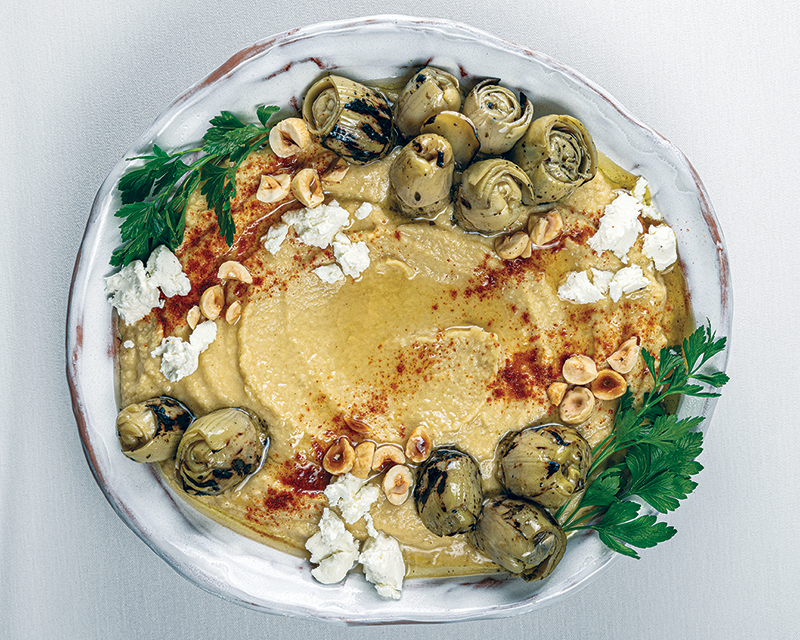
In my 30 years of professional cooking, I have had the pleasure of working with a number of inspiring chefs, some because of their technique, some for their love of hospitality and tradition, some for their idealism and vision. This year we lost a local culinarian whose enthusiasm for life, intrepid approach to established rules, and ability to find the brightest spots in otherwise dreary situations was an inspiration to many—Lou Jane Temple. Among many other things, she was a chef, author, red-head-by choice, and all-around adventurer who somehow always landed on her feet. Lou Jane encouraged me with my first bread baking, introduced me to celebrity chefs, helped me with my first magazine article 24 years ago, and showed me that sometimes it’s simply necessary to misbehave.
One of my first food memories of Lou Jane was her artichoke hummus, a staple in her catering repertoire. According to legend (romantic hearsay?—some might call it heresy), she was making hummus and found herself without any tahini, but in possession of a can of artichoke hearts. The artichokes found their way into the purée and her signature dip was born. Whether or not any of it is true, it is perfect Lou Jane, putting her special spin on something and keeping the party going at any cost. I think it makes for a nice, light hummus, not as creamy as traditional hummus can be, but brighter, a little unexpected, and perfect for impromptu festivities. It reminds one that when entertaining, the food, although meaningful, is not as important as being able to share something with others and celebrate the little moments life gives us.
Lou Jane’s Artichoke Hummus
Versions of this recipe have been published by Lou Jane on at least two occasions, in her first culinary murder mystery novel, Death by Rhubarb, and in her cookbook for entertaining she coauthored with A. Cort Sinnes, The Big Platter Cookbook. Here is my rendition, inspired by Louie and her skill at situational improvisation.
In a food processor, combine 2 cups cooked garbanzo beans (i.e. 1 can, drained, liquid reserved), 2 cups cooked artichoke hearts (i.e. 1 can brined artichoke hearts, drained, liquid discarded), 3 to 6 garlic cloves (you know your guests and your own preferences), the juice of 1 or 2 lemons, and a half teaspoon each of cumin, paprika, salt, and white pepper. Turn on the machine and begin processing, drizzling in extra-virgin olive oil until the desired consistency is reached. Taste, and adjust the seasoning as necessary.
My own twist was inspired by a situation similar to Lou Jane’s lack of tahini. Once, when making this at home, I got to the olive oil drizzling stage only to realize that I had just a few drops left in the bottle. A recent pantry article on nut oils had my fridge stocked with quite a variety, and knowing that hazelnuts and artichokes have an affinity for one another, I drizzled in about one quarter cup of toasted hazelnut oil and some of the reserved garbanzo bean juice (this naturally starchy liquid is also called aquafaba, and acts as a thickener, emulsifier, and stabilizer). The hazelnut oil supplies the nuttiness of tahini, provides a bit more depth, and is a delicious substitution for olive oil in this recipe. And, like Lou Jane, it’s a bit extravagant. To serve, spread the hummus in a wide, shallow bowl, garnishing it with marinated artichokes (the fancy, grilled, expensive jarred ones if you can), toasted hazelnuts, some dabs of goat cheese or feta, sprigs of parsley or cilantro, a generous glug of oil—olive or hazelnut—and a dash or two of paprika. Serve, accompanied by a good flatbread, pita, chips, crackers, or raw sliced vegetables, and drinks, being certain to enjoy your guests, make them feel cared for, and appreciate the moment for what it is, just as she would have. In hindsight, this dish really is a reflection of Lou Jane. It makes the best from a less than ideal situation, is a bit exotic with artichokes and spices, is sunny and bright, and I am certain that on more than one occasion her hair was the exact shade of red as the paprika sprinkled on top.
In Your Pantry: Hazelnuts
Although perhaps not the first nut that comes to mind when pondering nuts, the hazelnut (aka filberts or cobnuts) is certainly a delicious one. They are grown in most temperate regions of the northern hemisphere, are versatile in the kitchen, and come in many forms. Hazelnuts are best when fresh because they take on bitter and rancid flavors when stored improperly and for too long a period of time. Look for fresh hazelnuts in stores that do a high volume of business, especially those specializing in bulk foods. They keep best when stored in the dark and in an airtight container. Not always conspicuous, be on the lookout for hazelnuts in various forms on your next trip to the market.
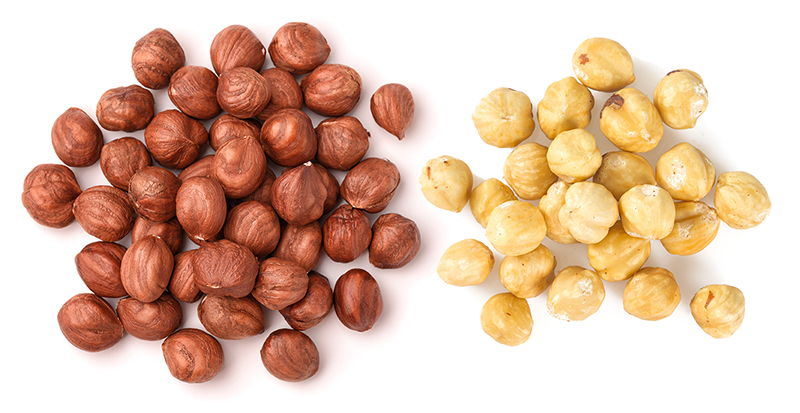 Raw and Toasted
Raw and Toasted
After shelling, hazelnuts are eaten both raw and toasted, with or without the skins. However, toasting the hazelnuts increases their crunchy texture and emphasizes their complex nutty flavor. To toast, place the nuts on a sheet pan in a 350°F oven for 10-15 minutes until lightly browned and fragrant. While still warm, transfer the nuts to a dish towel and vigorously rub them around to remove the skins. Separate the nuts from the skins. (Although a few skins are part of the flavor, too much skin can impart a bitter, tannic flavor to the finished dish.)
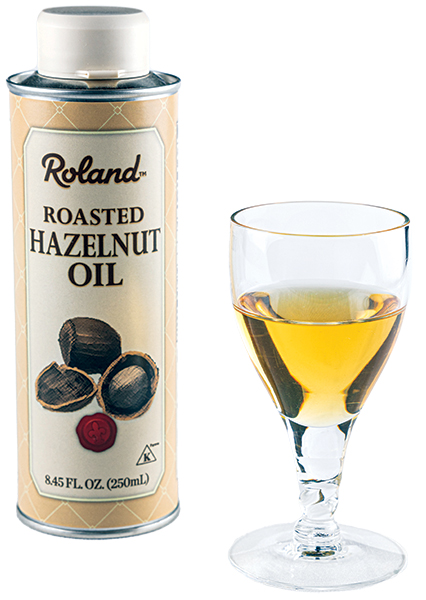 Hazelnut Oil
Hazelnut Oil
Buttery and rich, hazelnut oil is a delicious alternative for dressing pasta and salads, especially those containing mushrooms and cheese. Try it as a substitute for vegetable oil in chocolate cakes or pancake batters to lend them a little “Nutella-like” quality. Keep it stored in the refrigerator to extend its shelf life.
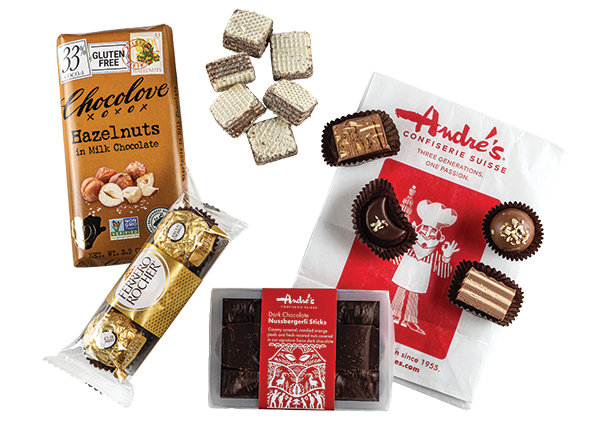 Gianduja/Gianduia
Gianduja/Gianduia
Perhaps the most popular use for hazelnuts is in combination with chocolate. Invented in Turin, Italy, at the turn of the 19th century, gianduia is a paste made by adding hazelnuts to either milk or dark chocolate. It is delicious on its own, used as a filling for wafers and cakes, and as part of other confections. For the full gianduja experience, visit Kansas City’s own Andre’s Confiserie Suisse for a wide assortment of chocolate-hazelnut combinations, including Ankara (a dark roasted hazelnut praline covered in dark chocolate, named after the capital of Turkey, the largest producer of hazelnuts in the world), “Swissair,” Noisette truffles, and Nussbergerli sticks.
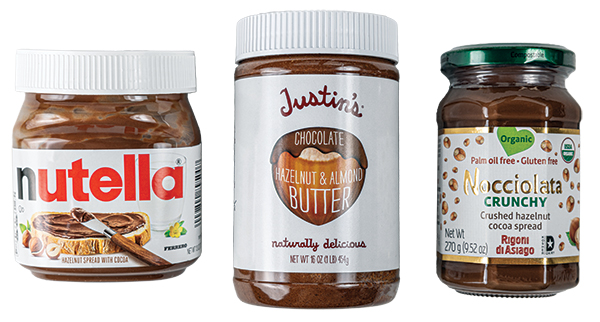 Spreads
Spreads
Unless you work in the culinary industry, finding 100 percent hazelnut paste is relatively challenging (and expensive!). It is most often found in combination with other nuts and/or chocolate. Nutella is by far the most famous version, but thinking/looking outside the familiar jar can introduce you to a whole new world of luscious hazelnut-based spreads. The Italians excel in this field, so be especially mindful of those. Hazelnuts in paste form have a very long shelf life, so don’t be afraid to stock up.


